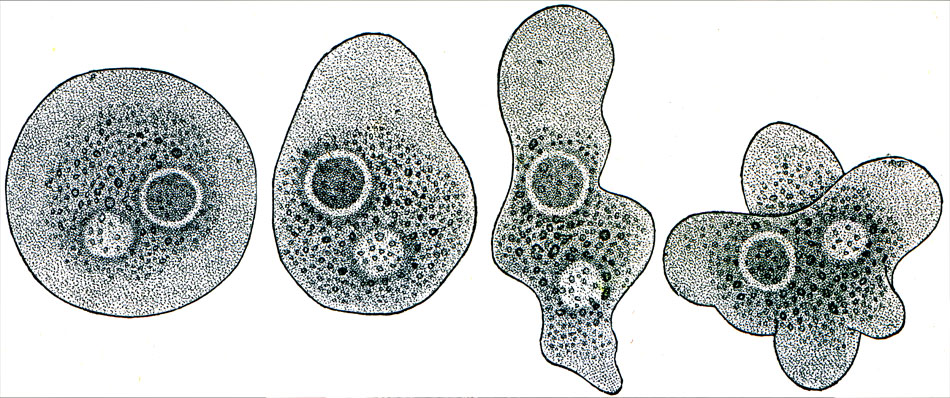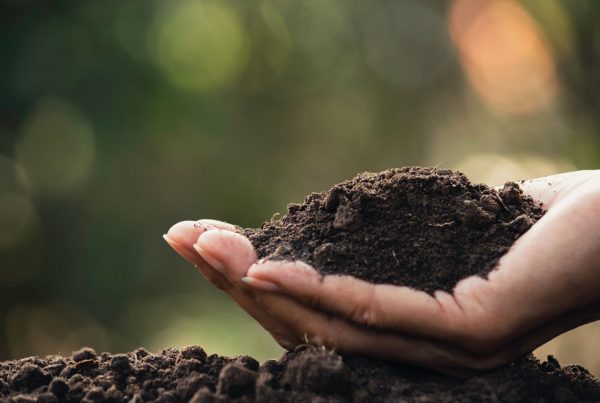Frank Sinatra had no idea that his song “Amy” would apply to our next guest but “The Chairmen of the Board” couldn’t have put it any better with his lyrics “…ever and ever fascinated by her…”! We are ab-soil-utely certain that you’ll feel the same way once you learn more about the benefits she contributes toward making healthy soil. Our “Amy” is a microscopic testate amoeba and she’s joining us from her home inside the rhizosphere.
Q: You know the routine Amy, we always start with a question about how our guest prefers to start their mornings, so let’s hear about how you start your day?
A: Oh that’s easy…home improvements! The first thing I do is inspect my test to ensure that it’s in perfect condition, since it functions as a protective shell and is my main defense against changing soil conditions and predators.
Q: So unlike naked amoebae that put the nature in ‘au naturel’ and resemble living blobs of jelly, you build and maintain your own “shell” that you call a test?
A: Yup! Some of my relatives look like they’ve just climbed out of a primordial pool of ooze but testate amoebae are different because we make our own homes. Some tests are formed from secretions that are very similar to what makes-up fingernails and the feathers and scales of other animals. Other amoebae secrete substances that are used to join particles of sand together or the discarded shells of other smaller soil microbes. Some testate amoebae are truly beautiful and build tests that look like vase-shaped mosaics of plate glass or chainmail suits of crystals. And, when certain amoeba reproduce, they’ll often build a duplicate test for the daughter to inhabit after division and separation.
Q: Besides adding an unseen beauty to the rhizosphere, what’s your main contribution to soil health?
A: Well, for starters, amoebae are distinguished from other soil microbes by our voracious appetites – not just voracious – VORACIOUS! Bacterial cytoplasm is delicious and I can’t get enough! Oh sure plant-friendly fungi will tell you that nothing compares to some fresh root exudates, but that’s because they’ve never wrapped a pseudopod around a squishy bacterium and ingested it through the process of phagotrophy.
Q: Now that sounds really complicated! What’s the connection to healthy soil and healthy plants?
A: Amoebae are mostly heterotrophs and get nutrition by ingesting organic matter, like oh-so-delicious bacteria, and we also feast on algae, fungi, other protozoa, and yeasts. Some studies have observed that we also consume detrital particles. These are small organic particles that have broken-free from larger organic residues that have collected in soil from burrowing creatures, decomposition, and weathering processes. All that voracious eating means that we play a tremendous role in nutrient-cycling in the rhizosphere of growing plants. Science is still unraveling our complex feeding behaviors and the significant way that we influence energy flows in soil food webs.
Q: “Ol’ Blue Eyes” said it best “…ever and ever fascinated by her…”! Amy thanks for all the special and unique contributions you making toward creating healthy soil and helping to grow healthy plants. How will you be spending the rest of your day?
A: It’s renovation time! I’m upgrading my test with an enormous addition…3 whole micrometers! It’s a huge job but once it’s done I’ll have more room to pull-in particles and close off the opening of my test if I get scared. Not to mention all the extra space that I’ll have to squish full with extra juicy bacteria to enjoy when all the hard work is done.
Next time we profile “Michella” a mycorrhizal hypha! She’s an expert matchmaker and owner of “Connecting Soil Mates” and she’s going to give us the scoop on how all the single fungi out there can find and create lasting symbiotic partnerships!



